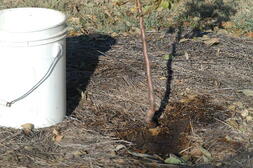 Newly planted trees have not established the extensive root system needed to absorb enough water during hot, dry, windy summers. Even trees two or three years old should receive special care. Deep, infrequent watering and mulching can help trees become established. Newly transplanted trees need at least 10 gallons of water per week, and on sandy soils they will need that much applied twice a week. The secret is getting that water to soak deeply into the soil, so it evaporates more slowly and is available to the tree’s roots longer. One way to do this is to drill a 1/8" hole in the side of a 5-gallon bucket and fill it with water. The hole should be near the bottom of the bucket. Let the water dribble out slowly next to the tree. Refill the bucket once after moving it to the opposite side of the tree. After this bucket empties, you have applied 10 gallons. Very large transplanted trees and trees that were transplanted two to three years ago will require more water. A perforated soaker hose or drip irrigation can be used to water a newly established bed or foundation planting. In sunbaked soil, you may need to rough up the surface with a hoe or tiller to get water to infiltrate easily. It may be helpful to set the kitchen oven timer, so you remember to move the hose or shut off the faucet. If you are seeing surface runoff, reduce the flow, or build a berm with at least a 4-foot diameter around the base of the tree to allow the water to percolate down through the soil, instead of spreading out. Regardless of method used, soil should be wet at least 12 inches deep. Use a metal rod, wooden dowel, electric fence post or something similar to check depth. Dry soil is much harder to push through than wet. (Ward Upham) 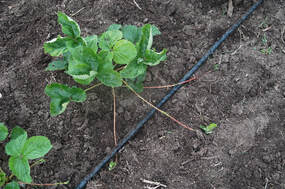 When temperatures exceed 90 degrees F, fruit plants lose water quickly. When this happens, moisture is withdrawn from the fruit to supply the tree. Stress from high temperatures, along with a moisture deficit in the root environment, may cause fruit to drop or fail to increase in size. The stress may also reduce the development of fruit buds for next year's fruit crop. If you have fruit plants such as trees, vines, canes, and such, check soil moisture at the roots. Insert a pointed metal or wood probe such as a wooden dowel, piece of rebar or a electric fence post to check the depth of watering. Even a long screwdriver works well for this. Push these into the soil with the goal of reaching 8 to 12 inches. This may not be possible if the soil is hard and dry. If you cannot reach the recommended depth, the plants should be irrigated to prevent drooping and promote fruit enlargement. Water can be added to the soil using sprinklers, soaker hose, drip irrigation, or even a small trickle of water running from the hose for a few hours. The amount of time you irrigate should depend upon the size of plants and the volume of water you are applying. Add enough moisture so you can easily penetrate the soil in the root area to the recommended depth. When hot, dry weather continues, continue to check soil moisture at least once a week. Strawberries have a shallow root system and may need to be watered more often – maybe twice a week during extreme weather. Also, newly planted fruit trees sited on sandy soils may also need water twice a week. (Ward Upham) 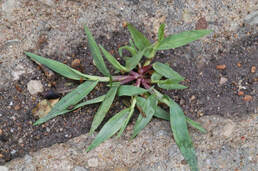 This is the time of year when people really notice crabgrass infestations. By far the best way to control crabgrass is to prevent it by maintaining a good, thick lawn. Crabgrass is an annual that must come up from seed each year and the seed must have light in order to germinate. If a lawn is thick enough that sunlight does not reach the soil, the crabgrass will not germinate. Under Kansas conditions it is not easy to maintain such a lawn; so many gardeners do the next best thing and apply a crabgrass preventer in the spring. Crabgrass preventers kill the seed as it germinates. Most do not have any effect on crabgrass that has already come up. If we are too late to apply a preventer, we do have other herbicides that will kill crabgrass plants including Ortho Weed-B-Gon Max +Crabgrass Control, Fertilome Weed-Out with Crabgrass Control, Monterey Crab-E-Rad and BioAdvanced Lawn Weed & Crabgrass Killer. Each contains quinclorac, which is a crabgrass herbicide, as well as other active ingredients that control broadleaf weeds. Quinclorac is an excellent crabgrass killer that controls not only crabgrass but also has good activity on foxtail and certain broadleaves such as field bindweed, black medic and clover. However, it does little to nothing to goosegrass. Fortunately, crabgrass starts declining about the middle of August. This is about the same time that cool- season grasses such as tall fescue and Kentucky bluegrass start to come out of their summer doldrums. By the first of September, the crabgrass will be less noticeable. Therefore, a small infestation is best ignored. Remember that crabgrass is a warm-season annual and will be killed by the first frost. (Ward Upham) 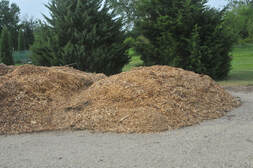 With many municipalities and tree service companies having wood chippers now, gardeners often are able to get chips free. We are sometimes asked our opinion about whether these make a good mulch. Some people have heard that these chips will tie up nitrogen so that the garden plants won't grow as well. If wood chips are used as a mulch, there is no cause for concern. However, if the chips are mixed with the soil, there can be a problem during the breakdown process. The microorganisms that break down the chips need a certain amount of nitrogen during the process. With most green material, there is enough nitrogen in the material itself to meet the needs of the microorganisms. However, nitrogen levels in wood chips are so low, the microorganisms must borrow it from the surrounding soil. This results in less nitrogen being available to the plants. However, when the raw organic material has been digested, the microorganisms die and release the nitrogen. Therefore, the nitrogen is not lost but is simply unavailable for plant use for a period of time. Again, this is only a concern if the wood chips are mixed into the soil. There is no problem with nitrogen tie-up if the chips are used as a mulch. However, one point should be kept in mind. These chips can be used by foraging termites as a bridge to homes and other structures. Termites are light and heat sensitive and will not bother the chips themselves if they are 3 inches deep or less. Therefore, watch the depth of these chips near the house or other buildings. Also leave a bare area several inches wide next to the house so that any termite activity is noticeable. (Ward Upham) 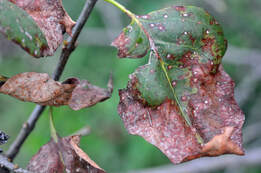 We are again seeing lilacs that are virtually defoliated with leaves showing many spots. Cercospora leaf spot appears to be the causal agent. This is one of those diseases that only shows up during wet, humid summers. Though the shrubs look bad, loss of leaves this late in the season will not harm otherwise healthy plants. Therefore, there is no need to apply a fungicide. Also, an application this late would not help anyway. However, cleaning up dead leaves will reduce the amount of inoculum for next year and is recommended. This disease is weather-dependent and requires wet, humid weather at certain times to flourish. Therefore, lilacs that were hammered this year may not become infected next. Even if we do have another wet summer that encourages this disease, we usually do not recommend a fungicide application as damage to the plant is negligible. However, if you would like to use a fungicide as a preventative next year, myclobutanil is labeled. Myclobutanil is found in Immunox; F-Stop Lawn & Garden Fungicide and Monterey Fungi-Max. (Ward Upham) These large (1-1/3- to 1-5/8-inch long) wasps fly slowly above the ground. Cicada killers have a black body with yellow marks across the thorax and abdomen. Wings are reddish-orange.
Although these wasps are huge, they usually ignore people. Males may act aggressively if they are threatened, but are unable to sting. Females can sting, but are so passive that they rarely do. Even if they do sting, the pain is less than that of smaller wasps such as the yellow jacket or paper wasp and is similar to the sting of a sweat bee. The cicada killer is a solitary wasp rather than a social wasp like the yellow jacket. The female nests in burrows in the ground. These burrows are quarter-size in diameter and can go 6 inches straight down and another 6 inches horizontally. Adults normally live 60 to 75 days from mid-July to mid-September and feed on flower nectar and sap. The adult female seeks cicadas on the trunks and lower limbs of trees. She stings her prey, flips it over, straddles it and carries it to her burrow. If she has a tree to climb, she will climb the tree so they can get airborne and fly with cicada back to the nest. If not, she will drag it. She will lay one egg per cicada if the egg is left unfertilized. Unfertilized eggs develop into males only. Fertilized eggs develop into females and are given at least two cicadas. Cicadas are then stuffed into the female’s burrow. Each burrow normally has three to four cells with one to two cicadas in each. However, it is possible for one burrow to have 10 to 20 cells. Eggs hatch in two to three days, and larvae begin feeding on paralyzed cicadas. Feeding continues for four to 10 days until only the outer shell of the cicada remains. The larva overwinters inside a silken case. Pupation occurs in the spring. There is one generation per year. Cicada killers are not dangerous, but they can be a nuisance. If you believe control is necessary, treat the burrows after dark to ensure the female wasps are in their nests. The males normally roost on plants near burrow sites. They can be captured with an insect net or knocked out of the air with a tennis racket during the day. Permethrin may be used for control. Products with permethrin include the following. Dusts Eight Garden Dust - Bonide Multipurpose Garden and Pet Dust - Green Thumb Garden, Pet & Livestock Dust - Hi-Yield Liquids 38 Plus Turf, Termite & Ornamental Insect Spray - Hi-Yield Eight Vegetable, Fruit & Flower Conc. - Bonide Eight Yard & Garden RTS - Bonide Garden and Farm Insect Control- Hi-Yield (Ward Upham) 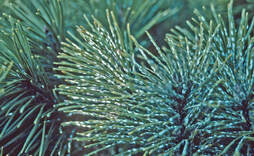 Pine needle scale is an armored scale that is found across the United States but especially in the eastern half of the country. Pine needle scale appears as conspicuous white specks on the needles. Scales feed by sucking sap from needles causing them to yellow and eventually brown. Heavy infestations can kill twigs, branches and even entire trees. Though both female and males are white, the female is larger (1/8-inch long) and wider at one end with the narrow end sporting a yellow or orange cap. Males are 1/32-inch long and narrow. Crawlers are bright red to purple to brown. Pine needle scale overwinters as eggs underneath female covers. Each female produces about 100 eggs. There are two generations per year in Kansas with crawlers appearing in May to early June and again in mid- to late-July. So now is the time to start looking for the second-generation crawlers. Use a hand lens to look for the crawlers. Crawlers may be easier to see by wrapping a group of needles with one of the following: - double sticky tape - white tape smeared with petroleum jelly - colored electrical tape smeared with petroleum jelly. Choose a color that allows the crawlers to show up. Spray when the crawlers start showing up on the tape. Effective insecticides include but are not limited to acephate (Acephate, Orthene), cyfluthrin (Tempo, BioAdvanced Vegetable & Garden Insect Spray), and permethrin (38 Plus Turf, Termite & Ornamental Insect Spray; Eight Vegetable, Fruit & Flower Concentrate or Garden and Farm Insect Spray). Remember, insecticides must be applied to crawlers soon after they emerge. Once the scale has settled down and formed its waxy cover, insecticides are ineffective. (Ward Upham) 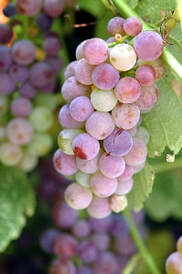 It takes more than color to determine when to harvest grapes. Grapes often are fully colored before they are fully ripe. Look for a whitish coating on the fruit and look for the seeds to change from green to brown. The final test is to taste the berries for sweetness. Grapes don’t continue to ripen once they are removed from the vine so be sure the quality is there before harvesting. Once harvested, grapes can be stored for up to eight weeks if kept at 32 degrees with 85 percent relative humidity. Other attractive options are available as well including making juice, jellies, jams and wine. (Ward Upham) |
AuthorsCynthia Domenghini runs the Horticulture Response Center in the Department of Horticulture and Natural Resources at Kansas State University. Other contributors include K-State Extension Specialists. Archives
March 2024
Categories
All
|
| K-State Research and Extension Horticulture Newsletter |
|
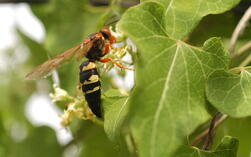
 RSS Feed
RSS Feed
